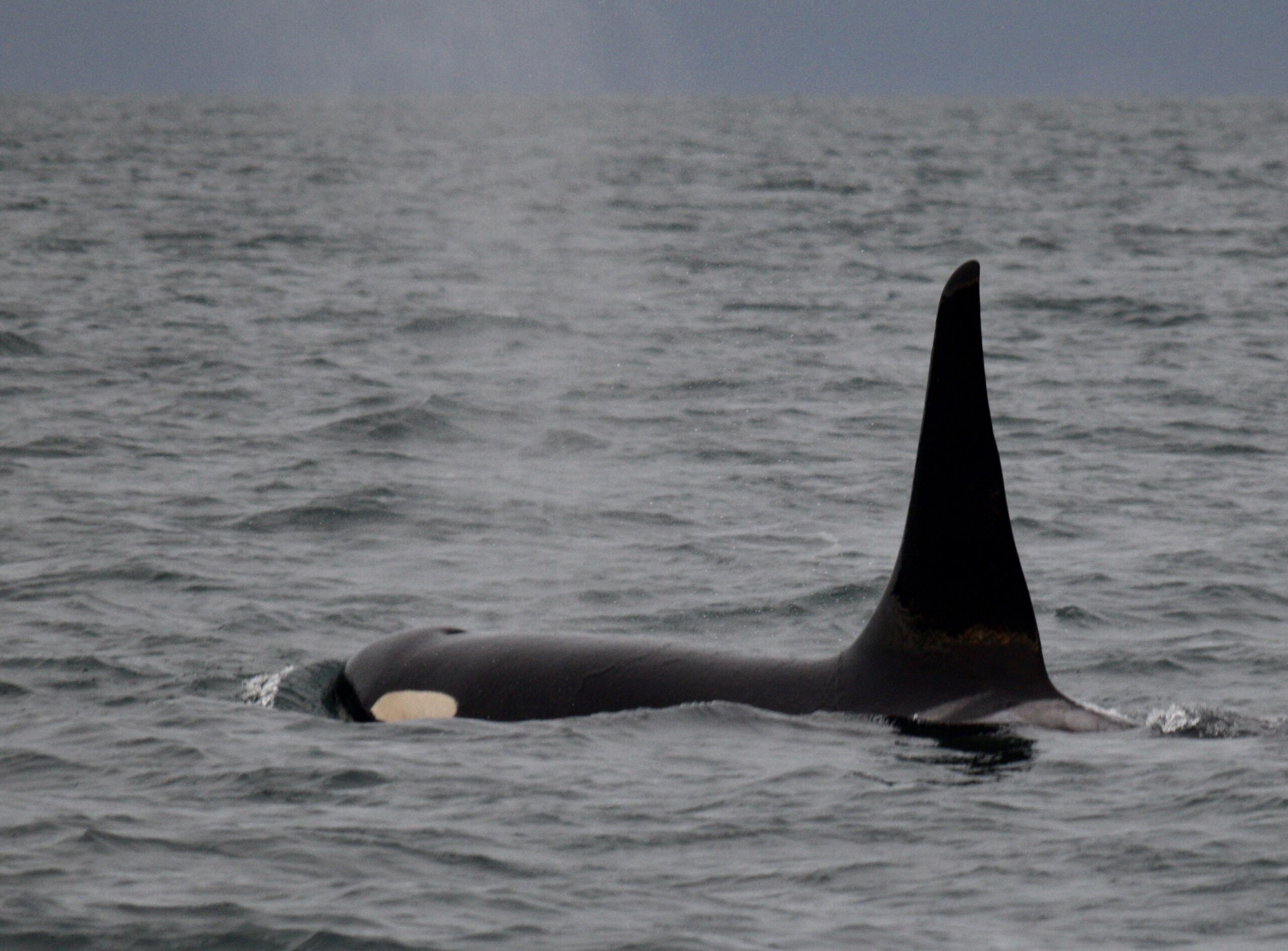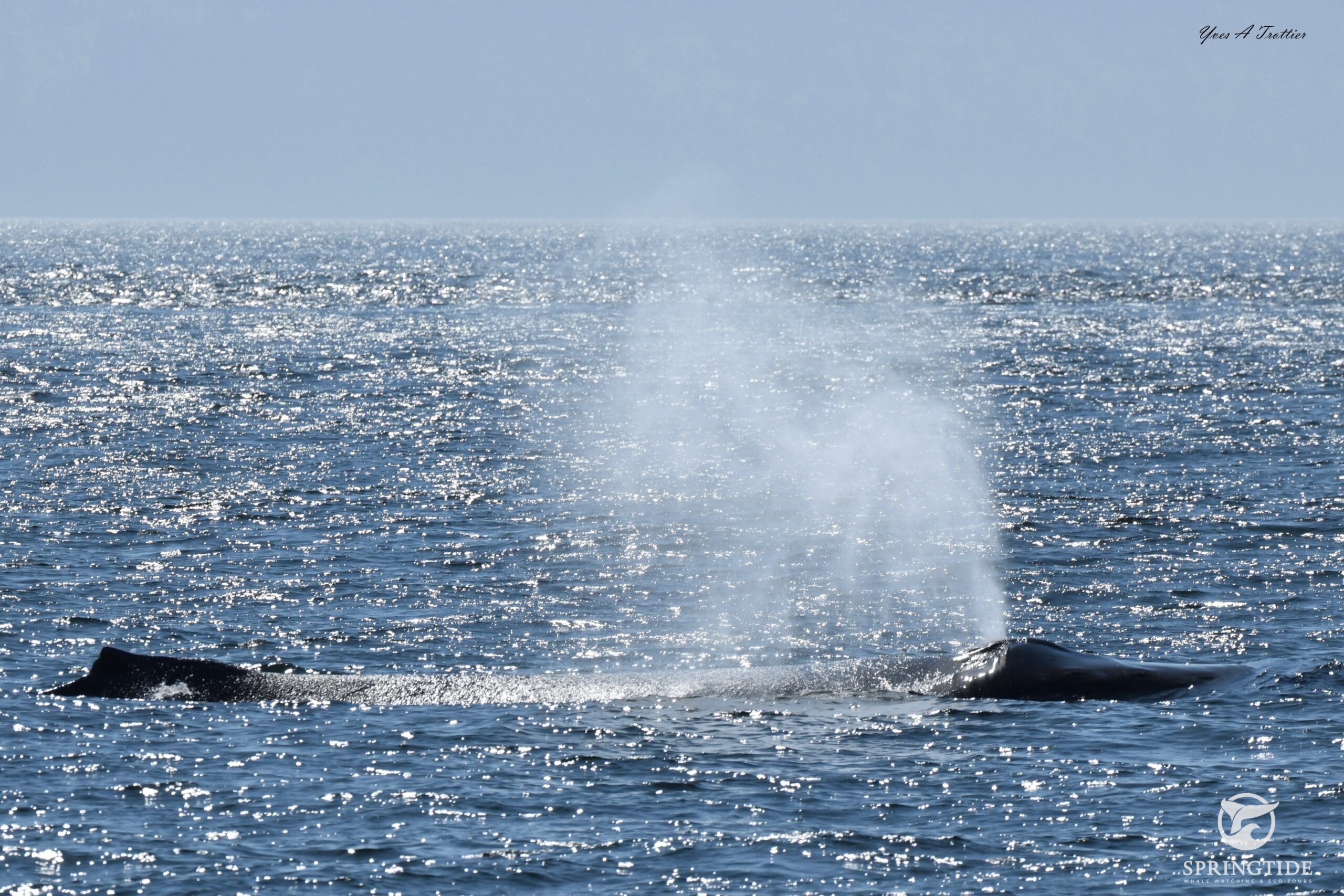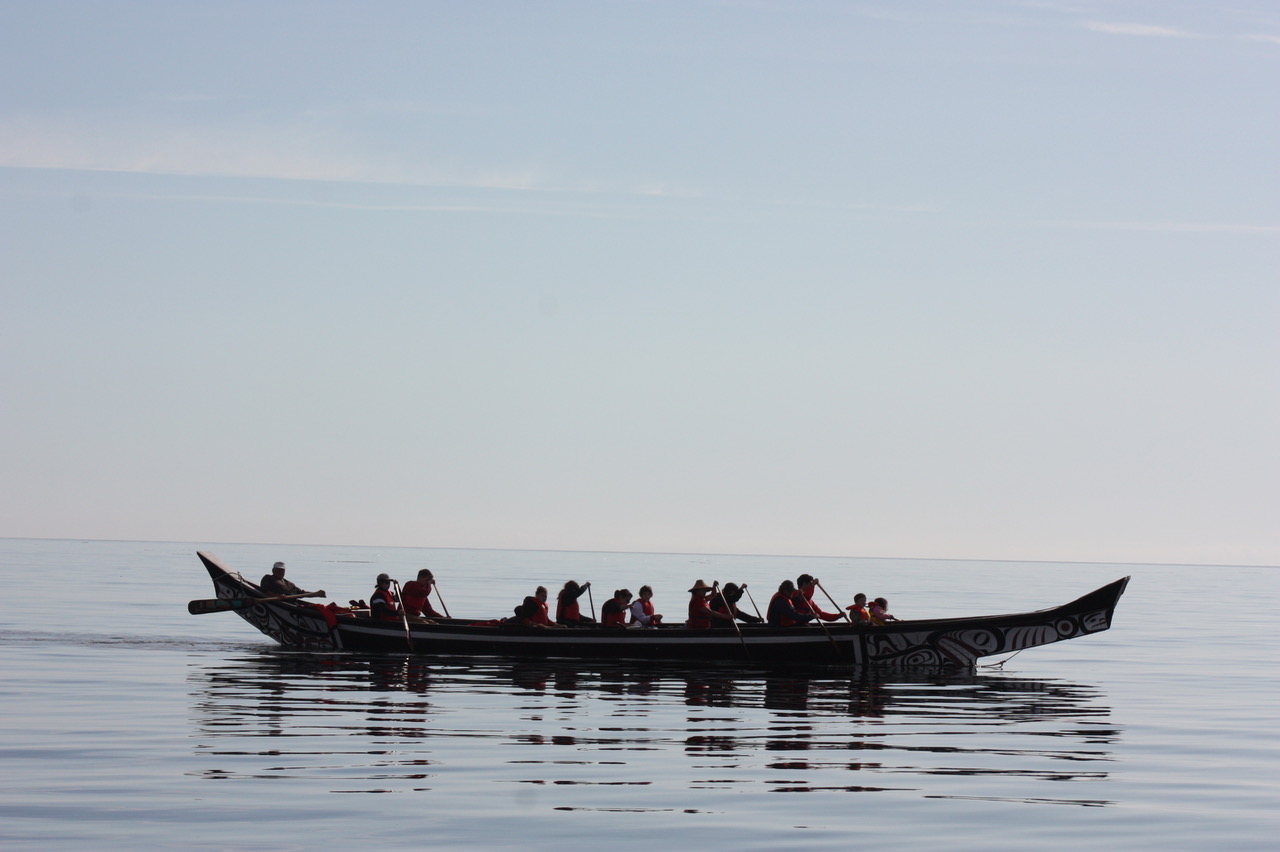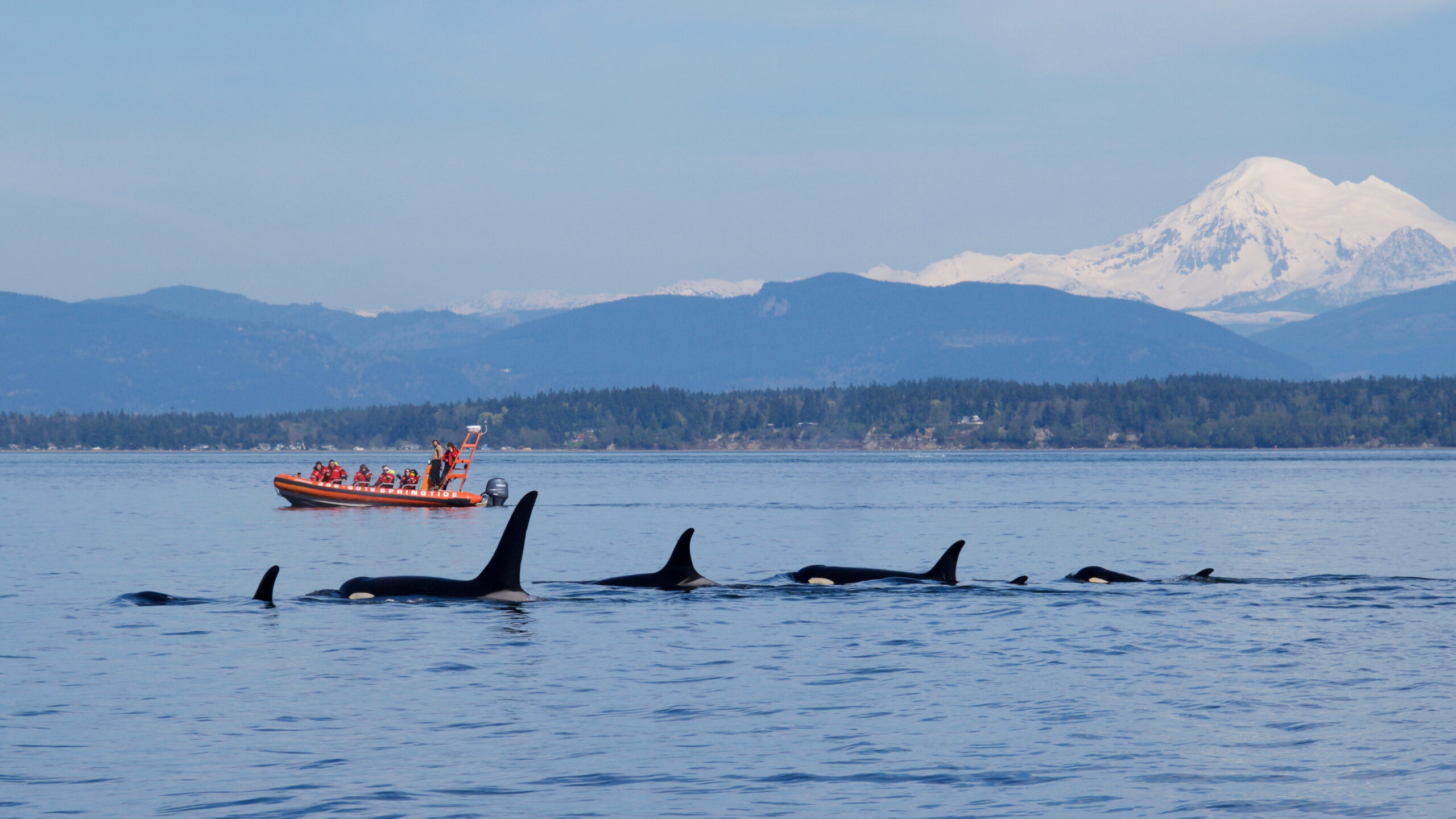As a marine biologist, there is something that never stops to amaze me: it’s all the different very clever hunting strategies used by cetaceans around the world. They are 2 main reasons why animals would use different hunting strategies. First, if some animals are in competition for the same prey, then hunting a new prey could reduce that competition. And second, if an animal’s prey disappears with time, then hunting a different prey could save that animal.
Here are a few hunting strategies that I find particularly incredible, starting with solitary hunting strategies: those are hunting techniques that can be realized by a single individual.
Intentional stranding – Orcas (Orcinus orca)
Along the coasts of South America, orcas have developed an amazing hunting technique to catch seals. Seals are an extremely good source of energy as they present a very high fat content. Seals can be pretty hard to catch in the water as they are extremely fast and agile swimmers. So instead, orcas found a way to catch them on land where they are slow and defenseless.
An orca will swim back and forth, waiting for seals to approach the surf. Orcas will generally choose young and inexperienced seals as they are easier to catch. With its echolocation skills, the orca scans the shallow water and receives a detailed picture of what is going on. The orca positions itself while waiting for the right wave to emerge. Then the orca rides the wave right up onto the beach, snatches up a seal, and then rolls back out into the water with the next wave.
 The orca must learn to push itself back into a sufficient depth of water to swim away. It takes years to learn the technique and to avoid being definitively stranded. Young orcas don’t attempt to practice intentional stranding on their own until they are four or five years old. Before that, they are always accompanied by an adult, often their mother. The adult always stays between the beach and the young so that if the young get stranded, the adult can push it back toward the sea. The pair sometimes practices the stranding even if there are no seals on the beach, just to improve the technique.
The orca must learn to push itself back into a sufficient depth of water to swim away. It takes years to learn the technique and to avoid being definitively stranded. Young orcas don’t attempt to practice intentional stranding on their own until they are four or five years old. Before that, they are always accompanied by an adult, often their mother. The adult always stays between the beach and the young so that if the young get stranded, the adult can push it back toward the sea. The pair sometimes practices the stranding even if there are no seals on the beach, just to improve the technique.
Stingray hunting – Orcas (Orcinus orca)
The New Zealand orcas have a pretty varied diet, but they’re the only known orca population in the world to eat stingrays. The deadly rays can easily take down an orca, but the intelligent orcas have figured out how to hunt them with skill and dexterity. An orca generally approaches a ray by swimming upside down, grabs the ray either by the tip of its tail or its nose and then the orca rights himself so the ray is now on its back and enters in a state of tonic immobility. Tonic immobility is a behavior in which an animal takes on the appearance of being dead in response to a threat. Then the orca can either throw it in the air to knock it out or pass it to other orcas who can give deadly bites to the ray.
These New Zealand orcas also pass down their hunting knowledge and skills to their young. The adults will let the young ones play with the dead stingray before they eat it so they can practice holding and grabbing it.
Using tools – Indo-Pacific bottlenose dolphins (Tursiops aduncus)
In Shark Bay, along the west coast of Australia, some Indo-Pacific bottlenose dolphins wrap their beaks with sponges before they go hunting for fish hidden near the seafloor. This “sponging,” as we call it, allows the animals to search for food among sharp rocks and poisonous corals, without risking injuries. Those sponges protect the dolphins’ beaks as they dislodge fish from their hideouts.
This is the only known case of tool use in cetaceans. Surprisingly, not all bottlenose dolphins in Shark Bay use sponges this way. So how do some dolphins pick up the skill? Well, they are taught. Females appear to act as instructors, teaching the skill to their daughters — and occasionally to their sons.
Preparing cuttlefish – Indo-Pacific bottlenose dolphins (Tursiops aduncus)
In the Spencer Gulf, in the South of Australia, some Indo-Pacific bottlenose dolphins are able to prepare the cuttlefish they prey, by draining off the ink and removing the cuttlebone before eating the cuttlefish. How does the dolphin proceed? First, when he spots the prey, the dolphin flushes a cuttlefish out of the dense weeds where they generally hide, into an open area with clear visibility. He then adopts a vertical position, head down and tail up, and pins the cuttlefish to the sandy sea floor with its rostrum. And with a flick of its powerful tail, the dolphin kills the cuttlefish with a rapid downward thrust that breaks the cuttlebone.
Next, the dolphin expels the toxic black ink that cuttlefish squirt at predators when attacked. For that, he lifts the dead cuttlefish high in the water and repeatedly knocks it with its rostrum to release thick clouds of ink. Finally, the dolphin dives back down to the sea floor, where he scraps the cuttlefish along the sand, stripping off the back skin until the bone pops out.
What is the advantage for the dolphin? Well, this behavior dramatically improves the prey quality. First, the cuttlefish ink contains melanin, which inhibits gastric secretions, as well as chemicals like tyrosinase which impair chemoreception. So ink removal improves both digestive processes and palatability. Similarly, stripping off the dorsal skin is an effective means of releasing the cuttlebone intact, compared with the more difficult extraction of shattered cuttlebone shards from a masticated cuttlefish.
A lot of cetaceans species are social and hunting in groups is generally way more effective that hunting alone. Here are some examples of social hunting strategies which are hunting techniques that animals practice in groups and wouldn’t be able to realize on their own.
Bubble netting – Humpback whales (Megaptera novaeangliae)
All around the world, humpback whales engage in a practice known as “bubble-netting.” The whales (generally three or more) swim below a school of fish and then blow clouds of bubbles. These bubbles panic the fish, which prompts them to cluster into a tight ball. The whales then swim right through the ball with their mouths open, gulping fish-filled water.
In 1980, whale watchers saw a single humpback whale off of the East Coast of the United States do a modified version of this behavior. Before it blew bubbles, the animal slapped the water with its tail. That slapping behavior is known as lob-tailing. For the next eight years, whale watchers observed that more and more humpbacks picked up the practice. By 1989, nearly half of the population lob-tailed the water before starting to bubble-net schools of fish.
 A group led by Luke Rendell, a biologist at the University of St. Andrews in Scotland, wondered why the whales were changing their bubble-netting behavior. So the scientists investigated. What they found is that the whales were not eating herring as they had before. The abundance of these fish had fallen off in the region. So the whales started feeding on another small fish: the sand lance. Bubble-netting doesn’t panic the sand lance as easily as the herring. But when a humpback smacks the water with its tail, however, the sand lance bunch tightly as the herring had. That slap was needed to make the bubble-netting technique work on the sand lance.
A group led by Luke Rendell, a biologist at the University of St. Andrews in Scotland, wondered why the whales were changing their bubble-netting behavior. So the scientists investigated. What they found is that the whales were not eating herring as they had before. The abundance of these fish had fallen off in the region. So the whales started feeding on another small fish: the sand lance. Bubble-netting doesn’t panic the sand lance as easily as the herring. But when a humpback smacks the water with its tail, however, the sand lance bunch tightly as the herring had. That slap was needed to make the bubble-netting technique work on the sand lance.
This is a perfect example of how adaptable whales are. Their usual prey slowly disappeared from their habitat and so, in order to survive, the whales had to find a new prey and adapt their feeding technique to it. A first whale found the solution (probably by chance) and then others socially learned the trick from that first whale, and then from each other.
Wave washing – Orcas (Orcinus orca)
In Antarctica, some orcas also hunt seals but as the habitat is different from South America the hunting technique is different too. Here seals are not resting on beaches but on ice floes. So if orcas want to feed on them they have to dislodge them first. How do they proceed? One or a few orcas spy hop to determinate is there are seals around. Then they transmit the information to the rest of the group.
Here’s how they make their kill: the orcas, sometimes as many as seven alongside one another, charge the ice floe creating a pressure wave that either washes the seal off the ice or breaks the ice into smaller pieces, leaving the seal more vulnerable to the next attack. Once the seal is washed off the ice, the orcas work as a group to keep it from hauling onto another ice floe. The orcas try to confuse the seal by causing turbulence in the water with their tails and blowing bubbles. Away from the ice, the orcas attempt to tire and eventually drawn the animal by pulling it under the water by its tail. Generally, the seal succumbs from exhaustion and the orcas typically divide up their catch underwater.
Wave pressure and strand feeding – Common bottlenose dolphins (Tursiops truncatus)
In a few countries, like Mexico, Portugal or the USA, common bottlenose dolphins have been observed doing what we call wave pressure and strand feeding. A pod of dolphins cruises around until they find a school of fish, like mullets for example. Then in a well-coordinated maneuver, a few dolphins from the pod circle the fish in ever tighter circles, trapping and compressing the school into a very tight ball. At the same time, they herd the ball of fish towards a beach or a mudflat. Then, a few other dolphins from the pod position themselves in a tight line facing the ball of fish, and then surge forward, creating a powerful bow wave that pushes the fish up on the shore. Then those dolphins come all the way out of the water onto the shore and eat as many fish as they can. Then they flip back into the water and cruise around until they find another school of fish. This time, the dolphins will exchange roles so everyone can access the food. The dolphins that were circling the fish will now strand feed whereas the dolphins that just fed will now be the circling team.
Cooperation with humans – Common bottlenose dolphins (Tursiops truncatus)
Without any training from humans, certain bottlenose dolphins in Southern Brazil are helping fishermen with their catches. They have taught themselves to work as a team with humans, creating a win-win for them and the fishermen. The dolphins drive mullet schools towards a line of fishermen and “signal” via stereotyped head slaps or tail slaps when and where fishermen should throw their nets. Of course, the effort is not charitable on the part of the dolphins. Fish that escape the nets panic and often swim right into the mouths of the dolphins, which have learned to wait for that moment.

Apparently, this cooperative fishing has been going on for at least 120 years. But not all the dolphins of the local population do help the fishermen. It appears that the most helpful dolphins towards humans also turn out to be particularly cooperative and social with other dolphins.
The human side of this interaction is maintained through inter-generational information transfer, that is, teaching by elders, and it is very likely that a similar process is used to transmit this feeding strategy between generations of dolphins.
—
Laureline Formanek – Phd
Onboard Naturalist/Biologist for SpringTide Whale Watching & Eco Tours

